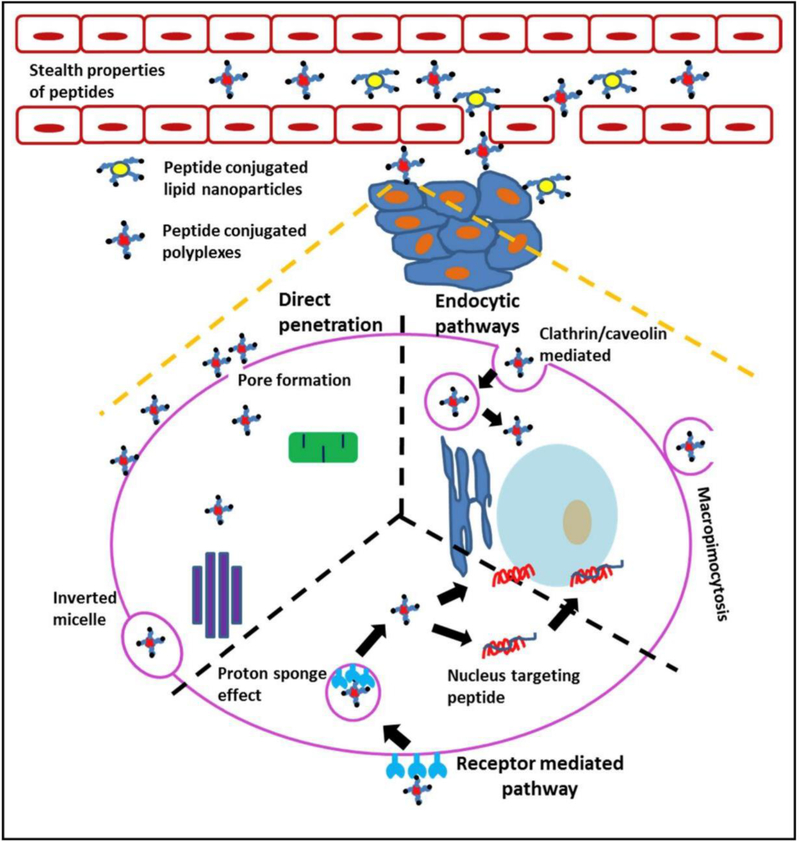Figure 6.
Schematic representation of pathways for peptide-mediated penetration of biological barriers to address key issues in non-viral gene carriers. Peptides can provide stealth properties to prevent opsonization while in circulation. Furthermore, peptides can facilitate the penetration of non-viral carriers across various cellular and sub-cellular barriers. Peptide-mediated transport mechanisms across the plasma membrane include uptake through endocytosis or macropinocytosis (right); active uptake through receptor-mediated endocytosis (bottom); and pore formation (left). Some peptides can mediate transcytosis through sequential endocytic uptake, subcellular transport, and exocytosis. Within cells, peptides can facilitate endosomal escape or nuclear targeting, leading to increased RNA delivery or gene transfection. (Reprint from R.K. Thapa, M.O. Sullivan, Gene delivery by peptide-assisted transport, Current Opinion in Biomedical Engineering 7 (2018) 71–82 under the terms of the Creative Commons CC BY license).

